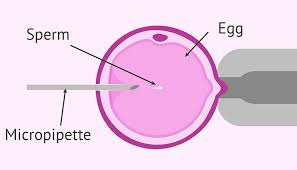Intracytoplasmic Morphologically Selected Sperm Injection(IMSI)
The development of intracytoplasmic sperm injection (ICSI) marked an important advance in the field of assisted reproduction. However, one remaining problem is the selection step of the spermatozoa for microinjection. The optics used for visualization of spermatozoa do not provide a sufficient resolution to allow identification of small defects and morphological abnormalities whereas the morphological quality of spermatozoa plays a major role in fertilization, implantation and pregnancy.
By increasing the resolution of the optics, intracytoplasmic morphologically selected sperm injection (IMSI) is able to select motile spermatozoa devoided of any structural defects and to optimize the outcome of ICSI.
Several studies have demonstrated that IMSI significantly improves embryo quality implantation and pregnancy rates . The presence of nuclear vacuoles in the injected spermatozoa was reported to be the most relevant parameter that might significantly impact the clinical results of ICSI.

Cases where IMSI may be used:
- High levels of DNA fragmentation.
- High levels of sperm aneuploidy.
- Men with severe oligozoospermia, asthenozoospermia or teratozoospermia.
- The egg quality has appeared to be normal.
- Repeated early abortions.
- In patients where there is a history of miscarriage.
- Previous ICSI fertilization failures.
- More than 90% of abnormal forms in sperm.
